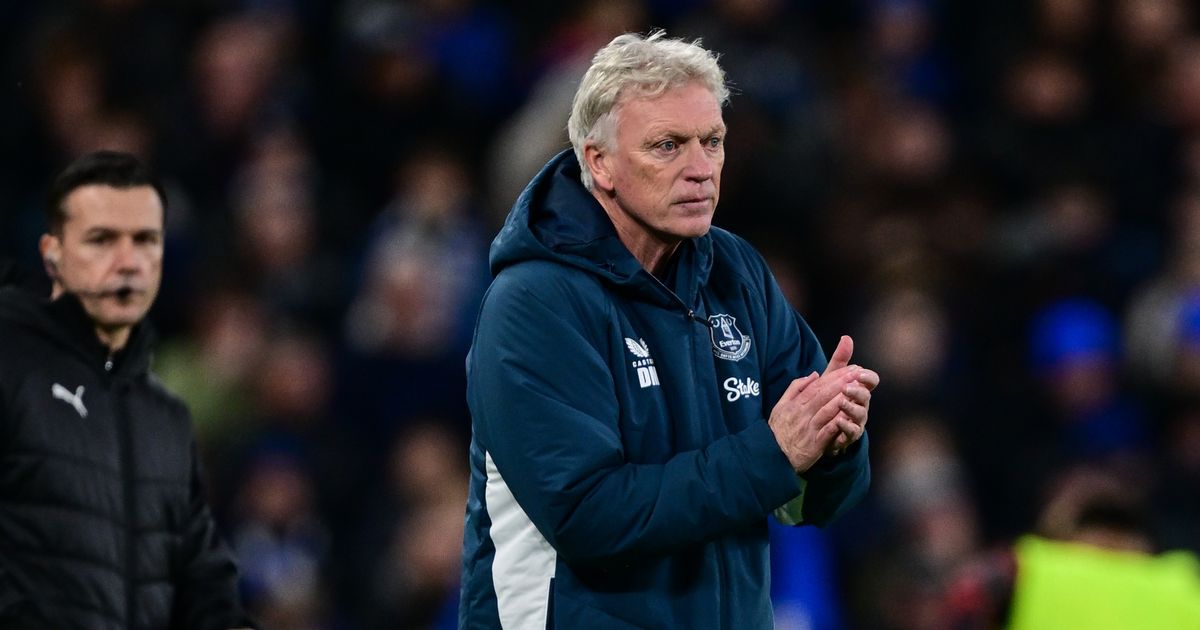Everton boss David Moyes had seen his team claim an improbable victory with 10 men at Manchester United on Monday night – but had to watch as they were sunk at home by Newcastle United
In the midst of a drubbing, there was one moment that symbolised a problem that threatens to undermine everything David Moyes is trying to do. Thierno Barry thought he had finally opened his account for the club when his sliced mis-kick spun past Aaron Ramsdale.
Alas, VAR got involved and spotted that Barry had inadvertently set up the chance with his arm. And so, that means Barry, who cost £27million from Villarreal, has played 464 minutes of Premier League football without scoring, without assisting, without registering a single shot on target.
Rightly, the 23-year-old French striker was praised for his physical endeavour in the wins over Manchester United and Fulham and those left inside the stadium gave him a decent ovation when he was substituted late in the hammering by Newcastle United.
His effort, enthusiasm and commitment cannot be questioned. But Moyes is going to need a striker who carries more threat if Everton’s season is going to develop into a positive one.
Barry’s struggles are highlighted when Moyes’ defensive operation has an off-day – and it was a major off-day against Newcastle.
“From the get-go, we were very flat,”: said Jake O’Brien. “For periods we were good, but we just left ourselves open at times and gave them too many opportunities, and they took them. We were chasing the game and we left ourselves wide open.
“It is important that we put it behind us and go into Tuesday (Everton are away at Bournemouth) with a positive mindset and come away with three points.”
READ MORE: Liverpool boss Arne Slot hails ‘very important moment’ as he makes Mo Salah statementREAD MORE: Oliver Glasner accuses Crystal Palace bosses over transfer failings after Man Utd loss
Moyes refused to use the absence of key midfielder Idrissa Gueye, who was sent off for slapping team-mate Michael Keane in a rare win at Manchester United on Monday, as an excuse for a performance full of holes.
“It could be that, but it could have been the quality of Newcastle United. You mustn’t underestimate them, they’re a Champions League team,” he said. “They got off to a great start, we got off to a terrible start. They were much better than us, played better, and much more experienced than we are.
“You can see Newcastle are learning from the Champions League games. When they had to defend, they are hard to play against and really quick on the counter-attack.
“We were beaten by the better team, there is no doubt about that.”
Join our new WhatsApp community and receive your daily dose of Mirror Football content. We also treat our community members to special offers, promotions, and adverts from us and our partners. If you don’t like our community, you can check out any time you like. If you’re curious, you can read our Privacy Notice.
Sky Sports discounted Premier League and EFL package

Sky has slashed the price of its Essential TV and Sky Sports bundle ahead of the 2025/26 season, saving members £192 and offering more than 1,400 live matches across the Premier League, EFL and more.
Sky will show at least 215 live Premier League games next season, an increase of up to 100 more.











